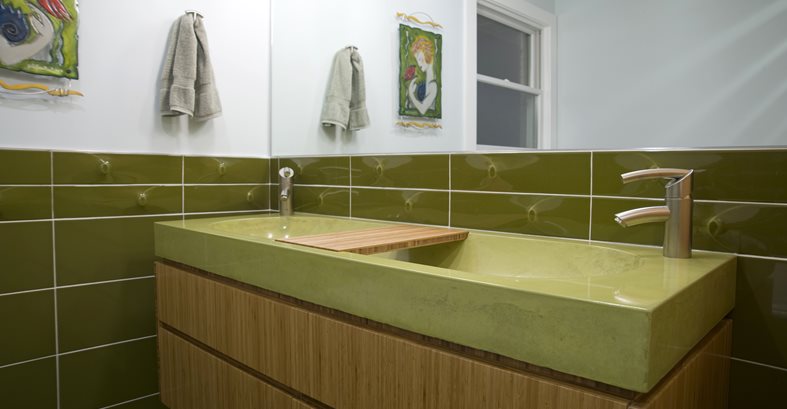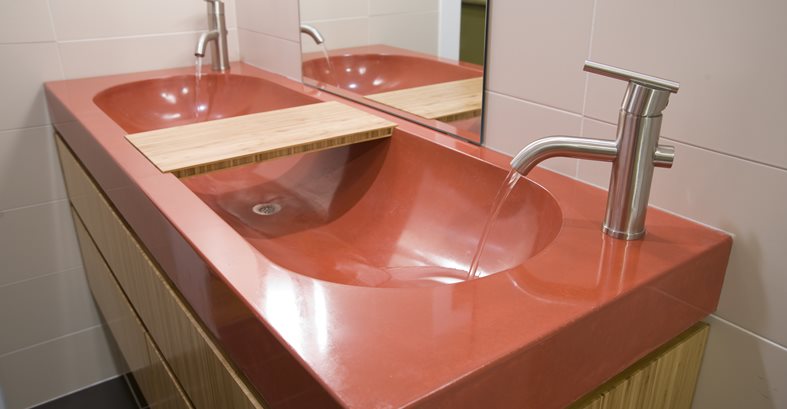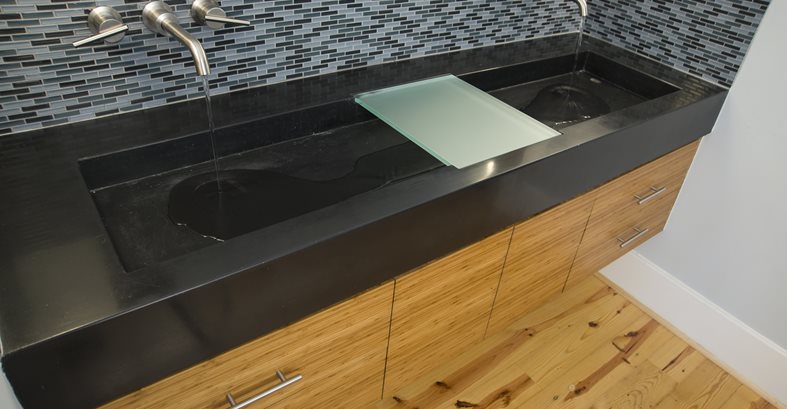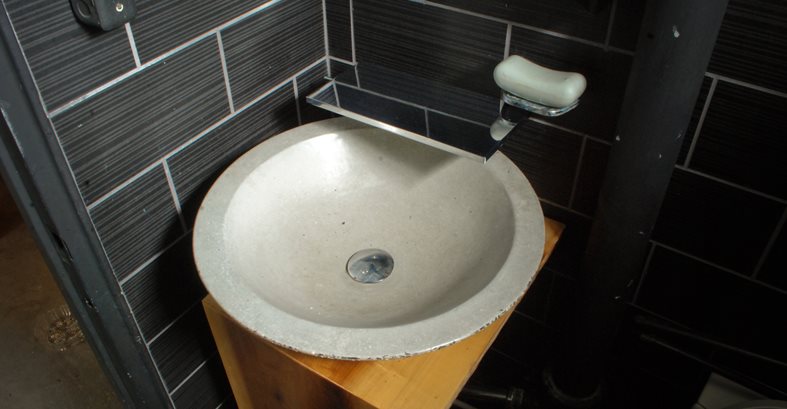- Integral Color Home
- Integral Color vs. Color Hardener for Stamped Concrete
- Tips for Getting the Best Results
- Common Integral Color Issues: Troubleshooting Tips from Expert Chris Sullivan
- Tips for Achieving Consistent Color
- Changing the Color of Integral Concrete
- Related Information:
- Comparison Chart of Concrete Coloring Products
- Product Newsletter Sign Up Today to Receive Monthly Updates
Paint-By-Number Concrete Color
BlueConcrete integral pigments can now be custom blended to match any Benjamin Moore paint colorFor years, many suppliers of integral concrete pigments have offered custom color blends to broaden their standard color palettes. Now for the first time, there’s one supplier that takes custom color to the next level, offering you the option of matching the hue of your concrete to any Benjamin Moore™ paint color, including vibrant shades such as Key Lime, Electric Orange and Strawberry Shortcake. Using the in-house color lab at BlueConcrete in Covington, Ga., is like visiting the paint mixing department at your local hardware store. Simply specify the Benjamin Moore™ color number or provide a paint sample, and BlueConcrete will formulate a package of custom-blended pigments ready to add to your concrete mix design.
“The integral custom pigments are well-blended and disperse beautifully,” says Eric Boyd of Reaching Quiet Design, an award-winning design-build firm renowned for its artisan work using concrete, steel, and wood. “One of our selling features is that we can match our concrete to any Benjamin Moore paint color. There's not another solid surface product that has that level of diversity,” he adds. (View the slideshow to several high-end sink projects Boyd has completed using concrete integrally colored with the Benjamin Moore custom pigments from BlueConcrete.)
Most of the Benjamin Moore custom color blends use white portland cement, with the exception of certain darker hues that may benefit from the depth imparted by using gray portland cement. Popular applications for the custom integral pigments include concrete countertops, sinks, fireplace surrounds, and concrete furniture. In addition to matching paint colors, BlueConcrete can also blend custom colors using other references, such as a fabric swatch, a piece of tile or even river rock. They recommend that you test the colors in a small batch of your mix design before the pour, since the final color of the concrete can be influenced by factors such as the color of the cement paste, aggregate color, admixtures, and water-cement ratio.
To download a free Benjamin Moore custom color guide for concrete, visit www.blueconcrete.com.
Design-build contractor
Eric Boyd
Reaching Quiet Design, LLC, Charlotte, N.C.
www.reachingquiet.com
Related resources:
Return to Integral Color
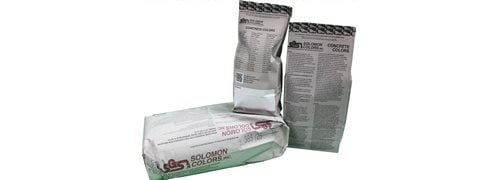 Solomon Integral Color
Dry and liquid pigments for coloring concrete
Solomon Integral Color
Dry and liquid pigments for coloring concrete
 Butterfield Integral Color
In Repulpable Bags - Toss the Bag Into the Mixer
Butterfield Integral Color
In Repulpable Bags - Toss the Bag Into the Mixer
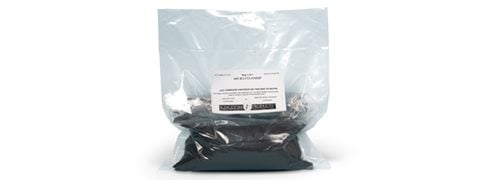 Integral Colors - Dry
By Kingdom Products: Suitable for all types of colored concrete
Integral Colors - Dry
By Kingdom Products: Suitable for all types of colored concrete
